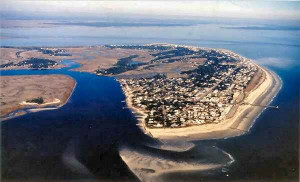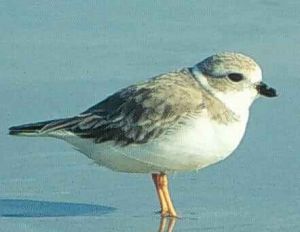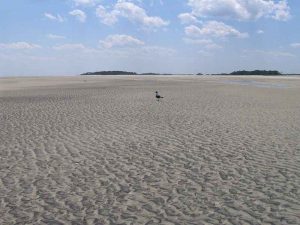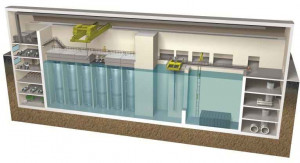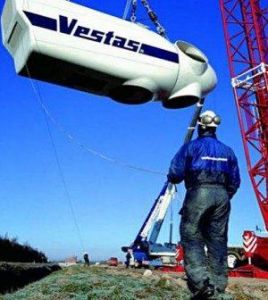Earlier this year there was a proposal to erect a 120 foot wind turbine at Tybee Island’s water treatment facility. The turbine would help power the facility. In addition to reducing carbon emissions, after 5 years, the city’s savings on electricity would add an extra $28,000 to its annual operating budget. However, it’s not been plain sailing.
What would be the first wind turbine in coastal Georgia could pose a significant threat to migrating, nesting and foraging shore birds and to the endangered piping plover (pictured below).
The consensus of opinion was that the proposed location may increase the chance of bird strikes and it was recommend that the city evaluate other potential sites for a turbine or wind farm. The potential for wind turbines on the island or a few miles off its coast in the future still exists.
Georgia Public Service Commissioner Tim Echols (pictured above) said:
“The question we’re asking about wind is will it work in Georgia?” … I think there are opportunities, but it’s very expensive. I think there’s still data that we have to have in order to move forward, and that’s just smart. It’s better to measure twice and cut once, and that’s exactly what we’re doing with wind powers.”
Mary Hallisey Hunt, a researcher and the director of operations for the Georgia Tech’s Strategic Energy Institute says that wind turbines release no air-polluting emissions or dangerous waste streams, there is nothing to extract from the earth and it is an inexhaustible fuel source. However she recognises that they are not popular with everyone in a community.
Currently, Georgia Power is conducting a pair of studies to determine if those pros outweigh the cons and whether investing in wind turbines is feasible, said Ervan Hancock, the power utility’s manager for renewable energies. He added:
“The technology continues to improve and get better to try to capture these wind resources; right now we’re in the process of doing smaller scale wind demonstrations … so we can figure out how that resource fits into the mix.”
Those demonstrations include both a land-based study and a study to determine the potential for off-shore wind turbines. The first study includes the placement of five small wind turbines at a not-yet-determined coastal Georgia location by mid-2015 and the installation of two identical turbines at a location in the north Georgia mountains.
The second study, to determine the potential of placing turbines in the relatively shallow waters several miles off Tybee’s coast, Echols said, likely has more potential because few people — both in coastal and mountainous regions — want the turbines in visible locations.
Tim Echols added:
“I think anyone who goes out to Tybee Island and stands on the beach realizes we have the potential for some wind. I think probably the only thing that works in Georgia is to go off shore — five, six, seven miles — and put something out there.”
There’s more testing to be done. Georgia Power plan to lease 250 acres of offshore water so that they can place buoy or tower-based sensors to judge whether the wind power is strong enough and consistent enough to warrant construction of an offshore wind farm. But don’t hold your breath- the study itself won’t be completed until 2020. That means that even if the results are favourable it will be at least a couple more years before a wind farm could be built.

